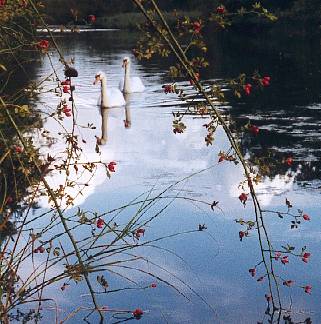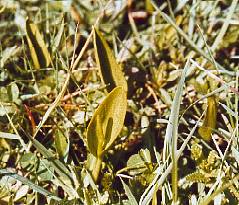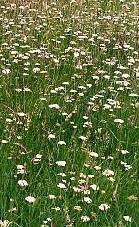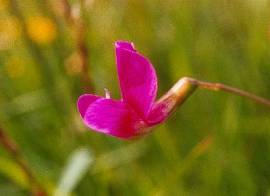Hilsea Lines
 Spanning about 2km along the northern edge of Portsea Island, Hilsea Lines are
an ancient monument built initially by Henry VIII, but enhanced in the 19th
century to give a series of bastions and ramparts, with the intention of
defending Portsmouth against attack from the North. There is now an interesting
mix of habitats, including woodland, grassland, and lakes of fresh, brackish
and salt water. Hilsea Lines is designated as a Site of Importance for Nature
Conservation (SINC).
Spanning about 2km along the northern edge of Portsea Island, Hilsea Lines are
an ancient monument built initially by Henry VIII, but enhanced in the 19th
century to give a series of bastions and ramparts, with the intention of
defending Portsmouth against attack from the North. There is now an interesting
mix of habitats, including woodland, grassland, and lakes of fresh, brackish
and salt water. Hilsea Lines is designated as a Site of Importance for Nature
Conservation (SINC).
The site is managed by Portsmouth City Council, with help from a voluntary
group. A consultative committee meets occasionally to keep local people
informed of developments and to feed back views and ideas on the management of
the area.
For more information, contact Hilsea Lines Ranger Service, Leisure Service,
Guildhall, Portsmouth, PO1 2AD.
See also the Portsmouth City Council
web page on Hilsea Lines.
The council have produced two leaflets, one on the military history and one on the
wildlife of the lines. These should be available in local libraries.
Here are some extra items of interest.
Woodland
Hilsea Lines has the only area of woodland on Portsea Island, consisting mainly
of elm, hawthorn and sycamore. The shrub layer has bramble, blackthorn, dog
rose, old man's beard and ivy. Combine this with the shape and height of the
fortifications and the result is a relatively sheltered site. This benefits
insects and enables some birds such as the Chiffchaff to spend the winter here
instead of migrating. Bird's nest orchid can be found in the dense shade of
large trees to the south of the ramparts.
Grassland

 There are various separate grassland areas, some of which are mown regularly.
The less intensively mown ones tend to be of most interest for plants. Over 200
plant species have been recorded at Hilsea Lines.
There are various separate grassland areas, some of which are mown regularly.
The less intensively mown ones tend to be of most interest for plants. Over 200
plant species have been recorded at Hilsea Lines.
Adder's tongue fern, pictured left, grows in some of the meadows, and also in some wooded
areas. This is a tricky plant to spot in amongst grasses and plantains, but May
is usually the best month, before other growth gets too rank. Bee, Common Spotted and
Pyramidal Orchids have been seen, but can also be difficult to see.

Near the eastern end of the lines there are some patches of flower-rich grassland.
More unusual species are Dyer's Greenweed and Grass Vetchling (bottom left), in amongst the
Bird's Foot Trefoil. At various points along the Lines there are swathes of Corky-fruited Water
Dropwort, pictured right, an ordinary-looking white flower with an extraordinary name.
It is fairly common in the southern half of Hampshire, but rare nationally. An unusual plant,
Euphorbia oblongata, is an invader from the Balkans. This can be found on the bank next to
Portscreek, a short way east of the Peronne Road cycle bridge.
Back to Sites
 Spanning about 2km along the northern edge of Portsea Island, Hilsea Lines are
an ancient monument built initially by Henry VIII, but enhanced in the 19th
century to give a series of bastions and ramparts, with the intention of
defending Portsmouth against attack from the North. There is now an interesting
mix of habitats, including woodland, grassland, and lakes of fresh, brackish
and salt water. Hilsea Lines is designated as a Site of Importance for Nature
Conservation (SINC).
Spanning about 2km along the northern edge of Portsea Island, Hilsea Lines are
an ancient monument built initially by Henry VIII, but enhanced in the 19th
century to give a series of bastions and ramparts, with the intention of
defending Portsmouth against attack from the North. There is now an interesting
mix of habitats, including woodland, grassland, and lakes of fresh, brackish
and salt water. Hilsea Lines is designated as a Site of Importance for Nature
Conservation (SINC).
 There are various separate grassland areas, some of which are mown regularly.
The less intensively mown ones tend to be of most interest for plants. Over 200
plant species have been recorded at Hilsea Lines.
There are various separate grassland areas, some of which are mown regularly.
The less intensively mown ones tend to be of most interest for plants. Over 200
plant species have been recorded at Hilsea Lines.